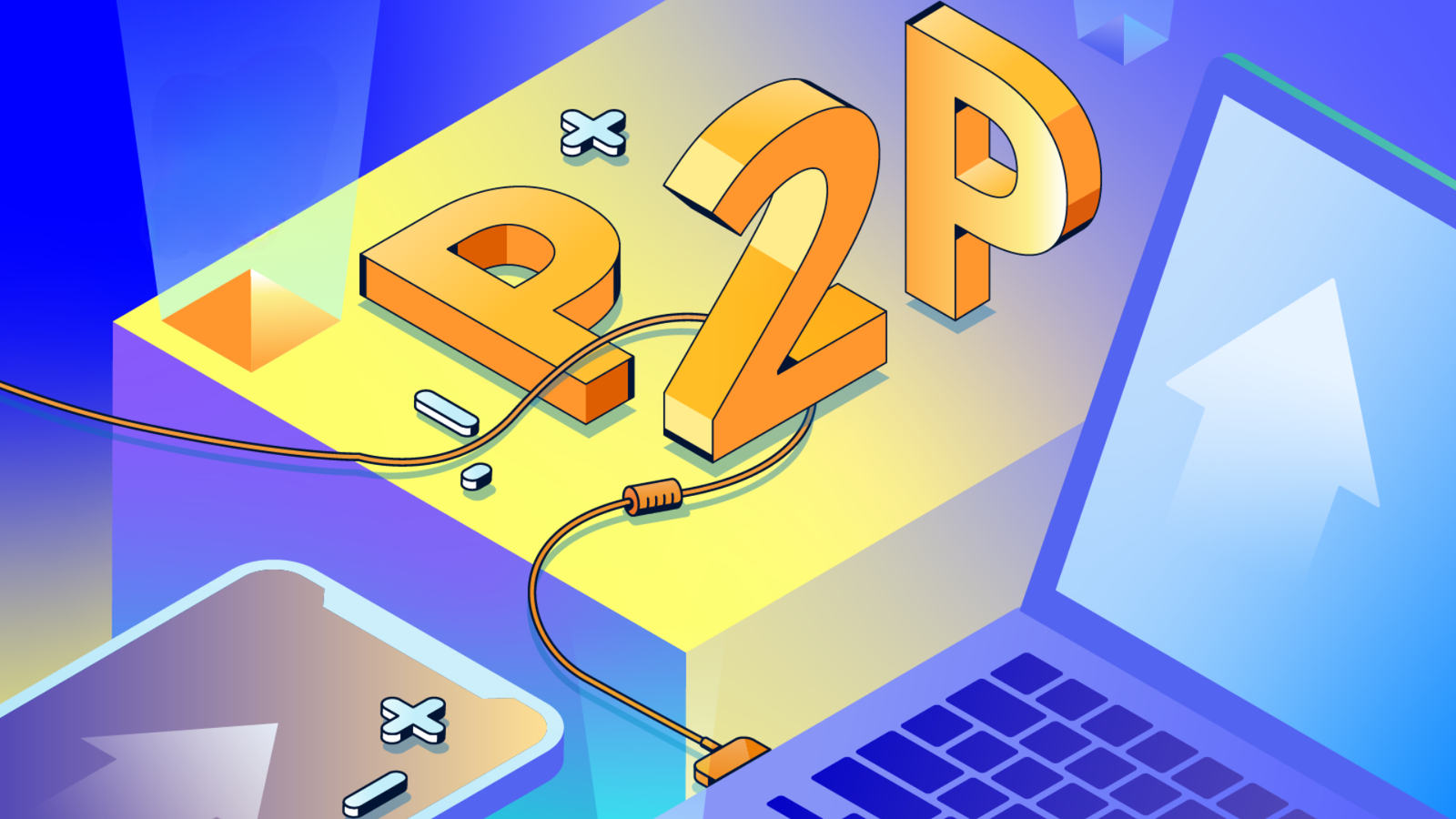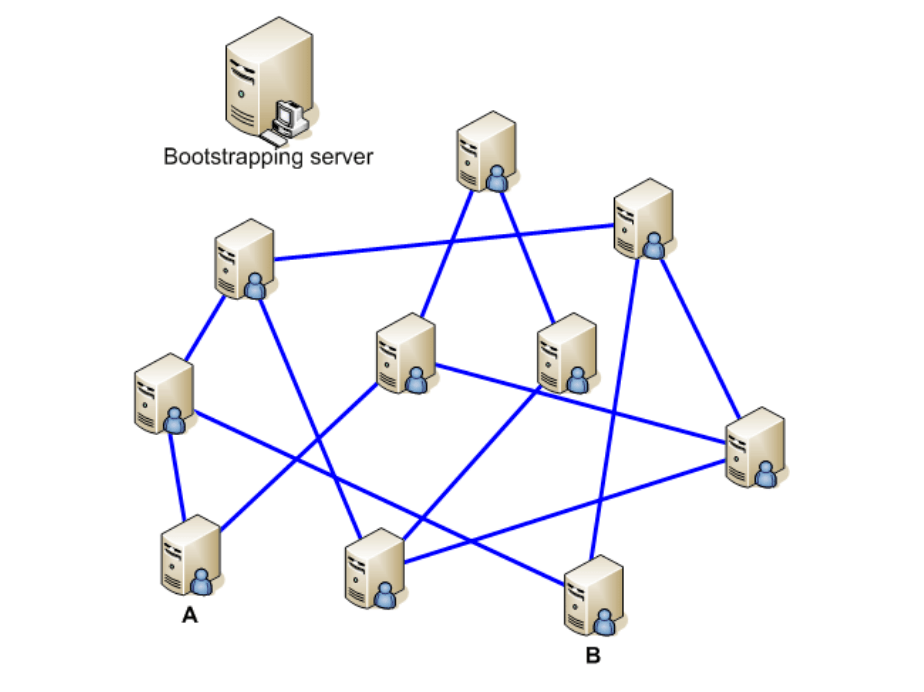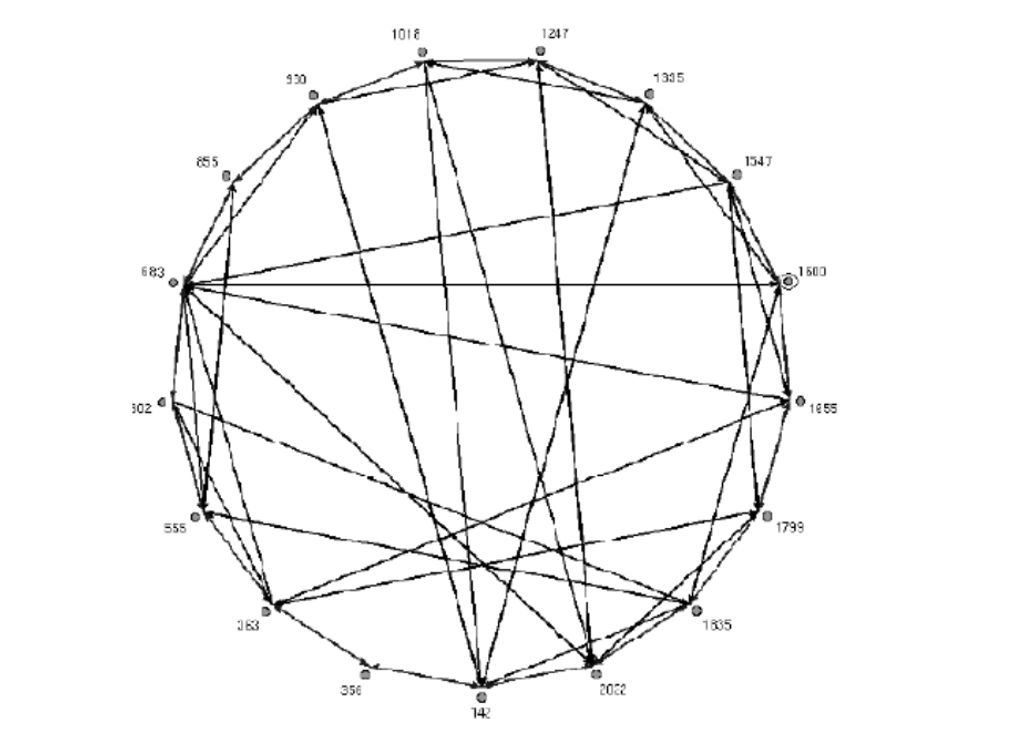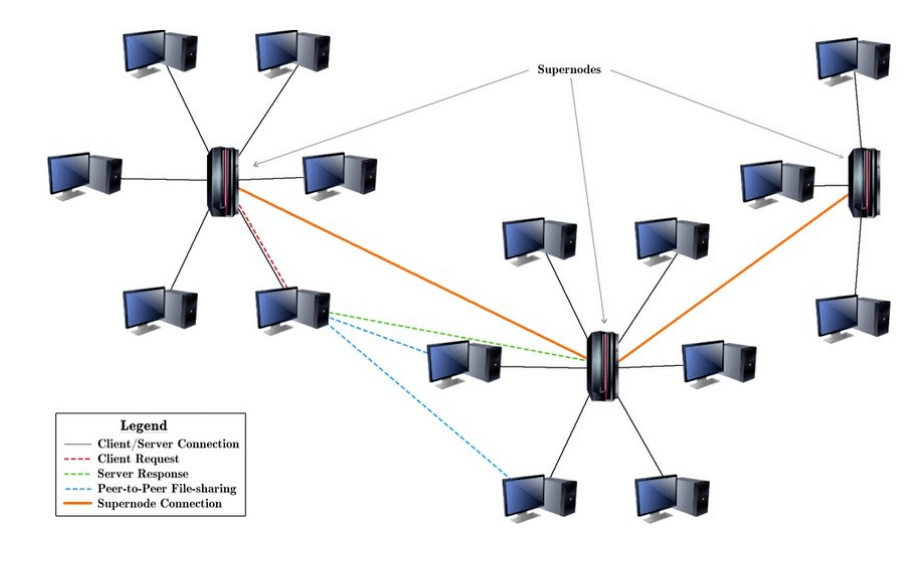What is P2P? How does the Peer to Peer network work? Learn about the applications and advantages and disadvantages of P2P peer-to-peer networks here!

P2P is one of the core technologies of many cryptocurrencies. In today’s article, we will learn what P2P Network is, how it works as well as applications & advantages and disadvantages of P2P network.
What is P2P?
P2P, or Peer-to-Peer, is a type of network where computers (nodes) connect and share resources directly with each other, without relying on a central server. Think of it like a group of friends sharing files or helping each other with tasks – everyone has equal standing and contributes to the network.

How does the Peer to Peer network work?
At its core, a peer-to-peer (P2P) network is maintained by a distributed network of users. This network structure typically has no central administrator or server, as each node stores a copy of the files and acts as both a client and a server to other nodes.
Therefore, each node can download files from other nodes or upload files to other nodes. This is what differentiates peer-to-peer networks from traditional client-server systems.
On a P2P network, connected devices share files stored on their hard drives. Using software applications designed to mediate data sharing, users can query other devices on the network to locate and download files. Once users have downloaded a file, they can then act as a source of that file.
In other words, when a node acts as a client, it downloads files from other nodes on the network. But when it acts as a server, it is the source from which other nodes can download files. However, in practice, nodes can perform both functions concurrently (for example, downloading file A and uploading file B).
P2P Network Models
We can classify peer-to-peer systems into three main architectural types: unstructured, structured, and hybrid peer-to-peer networks.
Unstructured Peer-to-Peer Networks

Nodes in unstructured peer-to-peer networks are not organized according to any specific structure. Participants communicate with each other randomly. These systems are considered robust against high churn (where some nodes frequently join and leave the network).
Although easier to build, unstructured peer-to-peer networks can be more demanding in terms of memory and CPU usage, as search queries are sent to the highest possible number of peers. This tends to flood the network with queries, especially if only a small number of nodes provide the desired content.
Hybrid peer-to-peer network

Organized Architecture for Efficient Search:In contrast, nodes on structured P2P networks have an organized architecture that allows nodes to efficiently search for files even if the content is not widely stored. In most cases, this is achieved through the use of hash functions that enable database lookups.
While structured networks can be more efficient, they often present a higher degree of centralization and typically require higher setup and maintenance costs. Moreover, structured networks are less robust when faced with high churn rates.
Hybrid peer-to-peer network

Hybrid P2P networks combine the traditional client-server architecture with some aspects of the peer-to-peer architecture.
For example, such a network may implement a central server to establish connections between peer computers in the network.
Compared to the other two architectures, hybrid models often demonstrate higher operational efficiency. They combine the main advantages of each approach, offering a significant degree of both efficiency and decentralization.
What are the advantages and disadvantages of peer-to-peer networks?
Advantages of P2P Networks
The structure of a peer-to-peer network is maintained by its users, who can both provide and consume resources. There is no central server or host, which makes P2P systems very different from traditional client-server models, where data is distributed unidirectionally (from a centralized server to its clients). This structure gives P2P networks several advantages for users:
- No network operating system required.
- No expensive server needed since individual workstations are used to access data files.
- No specialized staff required, such as network technicians.
- Much easier to set up than a client-server network, requiring little specialized knowledge.
- If one computer fails, it does not disrupt any other part of the network. It just means that those files are not available to other users at that time.
Disadvantages of P2P Networks
Despite the advantages mentioned above, P2P networks also have their own drawbacks:
- Since each computer can be accessed by others, it can slow down user performance.
- Files and folders cannot be centrally backed up.
- Files and resources are not centrally organized into a specific “shared area.” They are stored on individual computers and can be difficult to locate if the computer owner does not have a logical storage system.
- If a virus enters the network, many users will be affected. Ensuring that viruses are not introduced into the network is the responsibility of each individual user.
- Resources can disappear because the node providing the resource can disconnect at any time
Application of P2P network in Blockchain
P2P architecture can be suitable for a wide range of use cases. These days, P2P networks are a core element of most cryptocurrencies, accounting for a large portion of the blockchain industry.
However, they are also leveraged in other distributed computing applications, including web search engines, streaming platforms, online marketplaces, IPFS, and more

In financial technology, the term peer-to-peer is often used to describe the process of trading cryptocurrency or digital assets through a P2P network. P2P platforms allow buyers and sellers to make transactions without the need for intermediaries. In some cases, websites may also provide a P2P environment to connect lenders with borrowers.
Read more: Instructions for P2P trading on Binance


Pingback: Blockchain Technology: A Comprehensive Guide - coinrin.com
Pingback: What is Bitcoin (BTC)? Learn about Bitcoin before investing - coinrin.com